
The shoulder press, also known as overhead press or military press, involves pressing a weight upwards from a position level with your shoulders. You can perform this exercise with a barbell or dumbbells in a number of seated and standing variations. The shoulder press primarily targets the deltoid muscles in your shoulders, whilst also engaging your core and upper back.
Jump to
Benefits of the shoulder press
The shoulder press effectively targets your deltoids and triceps. It is often compared to exercises targeting similar muscles, such as the bench press, lateral raise or upright rows.
Full engagement of your deltoids
The key upper body exercises in your workout routine will be compound exercises that engage your deltoids to some degree. For example:
- Bench press - The bench press targets your anterior (front) deltoids, but doesn't fully engage the other parts of your deltoid muscle.
- Lateral raises - Lateral raises target your lateral (side) deltoids, but they do not engage your anterior (front) or posterior (rear) delts effectively.
- Upright rows - This exercise mostly engages your lateral (side) and anterior (front) deltoids.
These exercises will work some parts of your deltoid muscles, but they alone do not provide a comprehensive workout. The shoulder press engages all three heads of your deltoids, although the different variations will emphasize your anterior or lateral delts.

Being a compound exercise, it's a worthwhile addition to your shoulder day or push day workout routine. You should design your routine to provide full and comprehensive development of your delts.
May be safer
Some shoulder exercises can put significant strain on your wrists and shoulders.
Upright rows, for example, can lead to shoulder injuries due to the high degree of internal rotation of your shoulder. This is especially true with heavier weights, since there is more stress placed on your shoulders and rotator cuff muscles.
The shoulder press is generally safer and easier on your joints when compared to the upright row and similarly advanced exercises. This makes it a great option for beginners. It can also allow for the lifting of heavier weights and quicker progression.
As always, it's important to perform all exercises with the proper form to reduce the risk of injury.
Muscles
The shoulder press primarily works your anterior (front) deltoids, with some variations putting more emphasis on your lateral (side) deltoids. Aside from the Arnold press variation, the traditional shoulder press will not work your posterior (rear) delts.
In addition, the shoulder press also works your triceps, upper chest muscles and traps.
Anterior (front) deltoids
Your anterior deltoids, also known as front deltoids, are one of three parts of your deltoid muscles. They are located at the front of your shoulder and are engaged when you move your arm upward in front of your body. Strengthening your front deltoids can improve your shoulder stability and enhance your performance in everyday pushing, lifting or throwing movements.
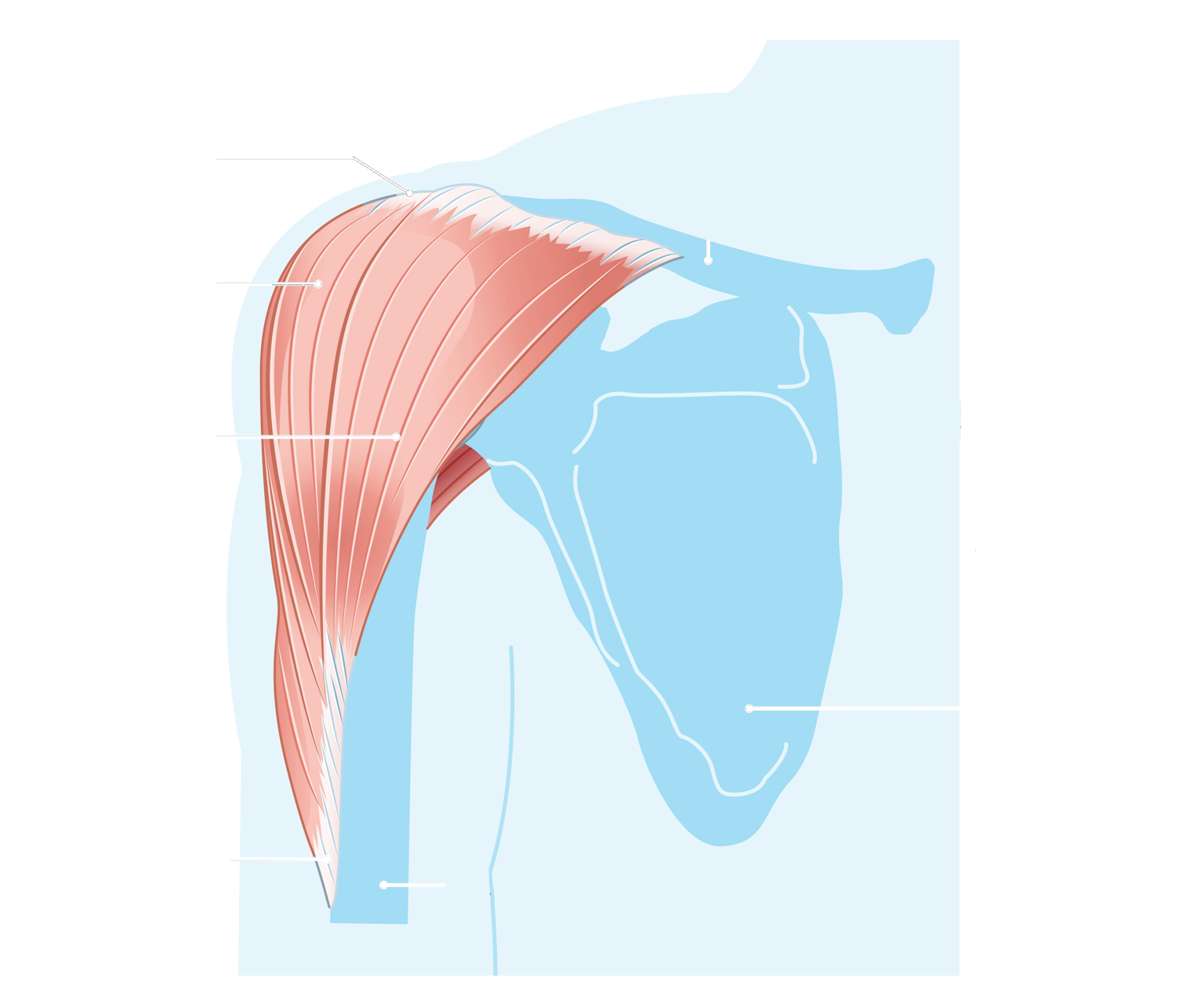
The shoulder press primarily targets your anterior (front) deltoids. When performing the barbell shoulder press, you can put more emphasis on your anterior deltoids by using a narrow grip.
Lateral (side) deltoids
The lateral deltoids, also known as middle deltoids or side deltoids, are your outermost shoulder muscles, responsible for raising your arms to the side. They have a rounded, triangular shape. Increasing the size and strength of these muscles can enhance your upper body appearance, and also help in everyday lifting and pulling activities.
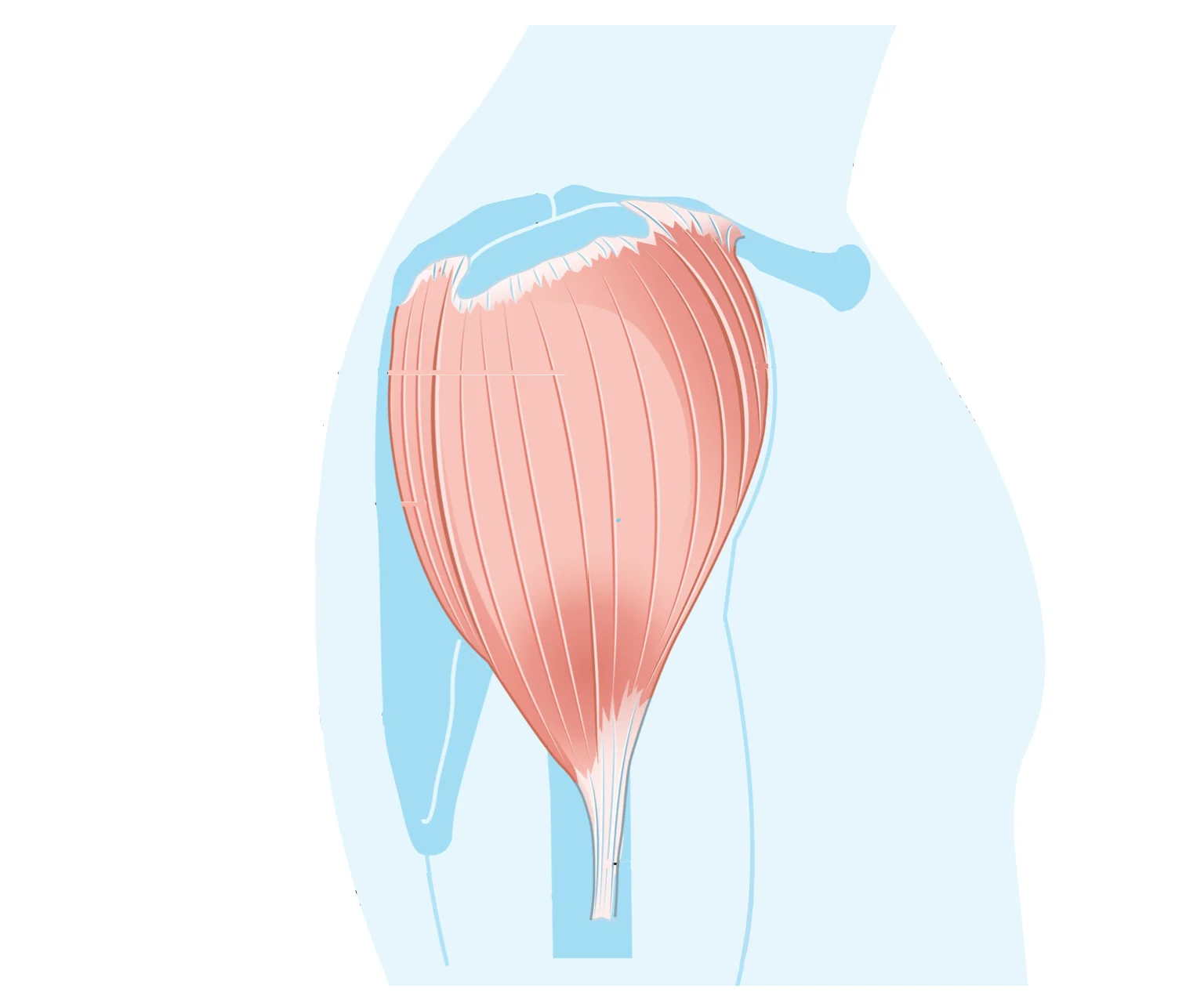
All variations of the shoulder press will engage your lateral delts. You can put more emphasis on your lateral delts by widening your grip on the barbell.
Triceps
Your triceps brachii, more simply known as triceps, are the large muscles located at the back of your upper arms. The triceps have three heads, known as the long head, the lateral head, and the medial head. The triceps are primarily responsible for the extension of the elbow joint, which allows the arm to straighten.
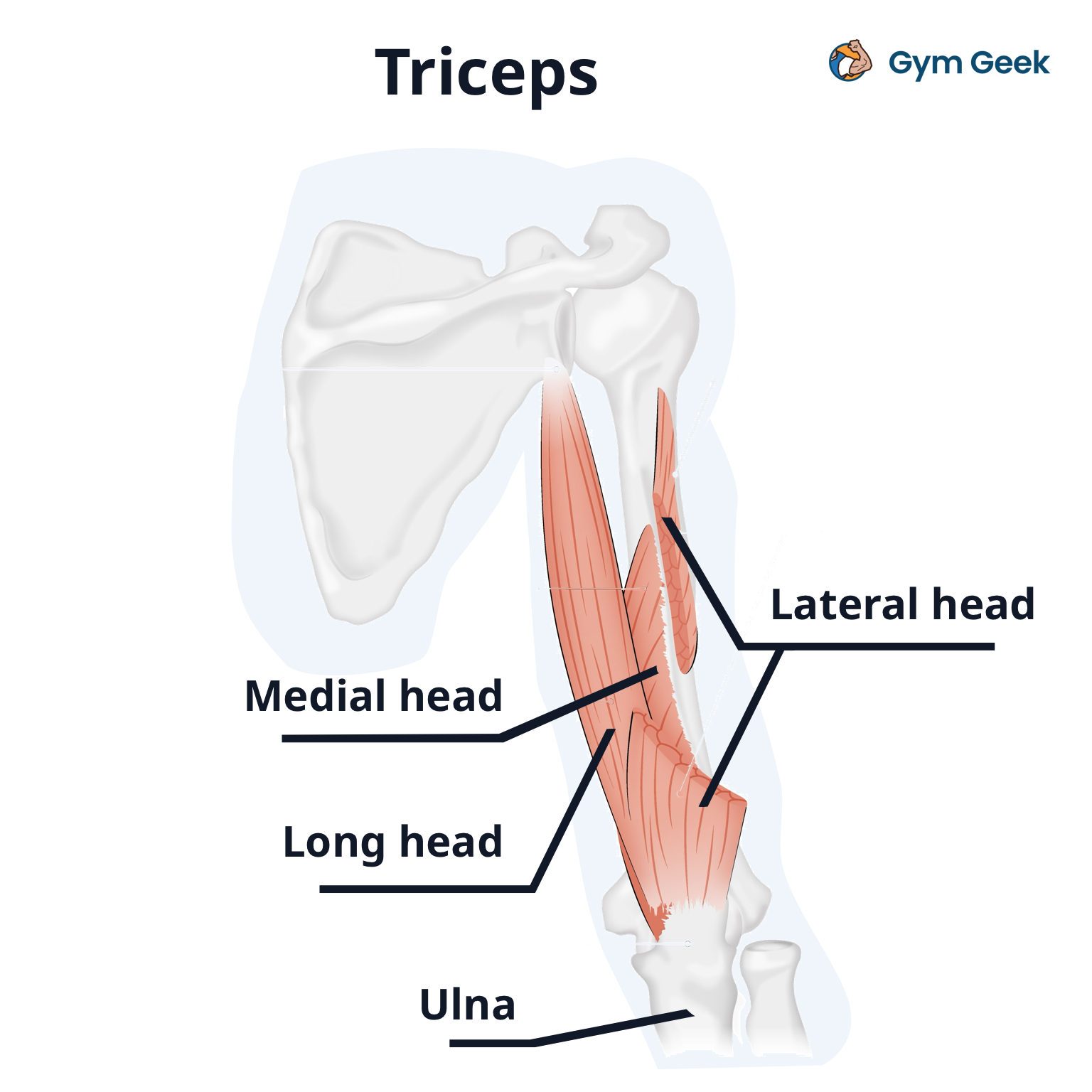
All variations of the shoulder press target your triceps muscles. The close grip barbell shoulder press, however, will target your triceps more than other variations. This is because the position of your arms will transfer a greater load into your triceps rather than your deltoids.
Barbell shoulder press
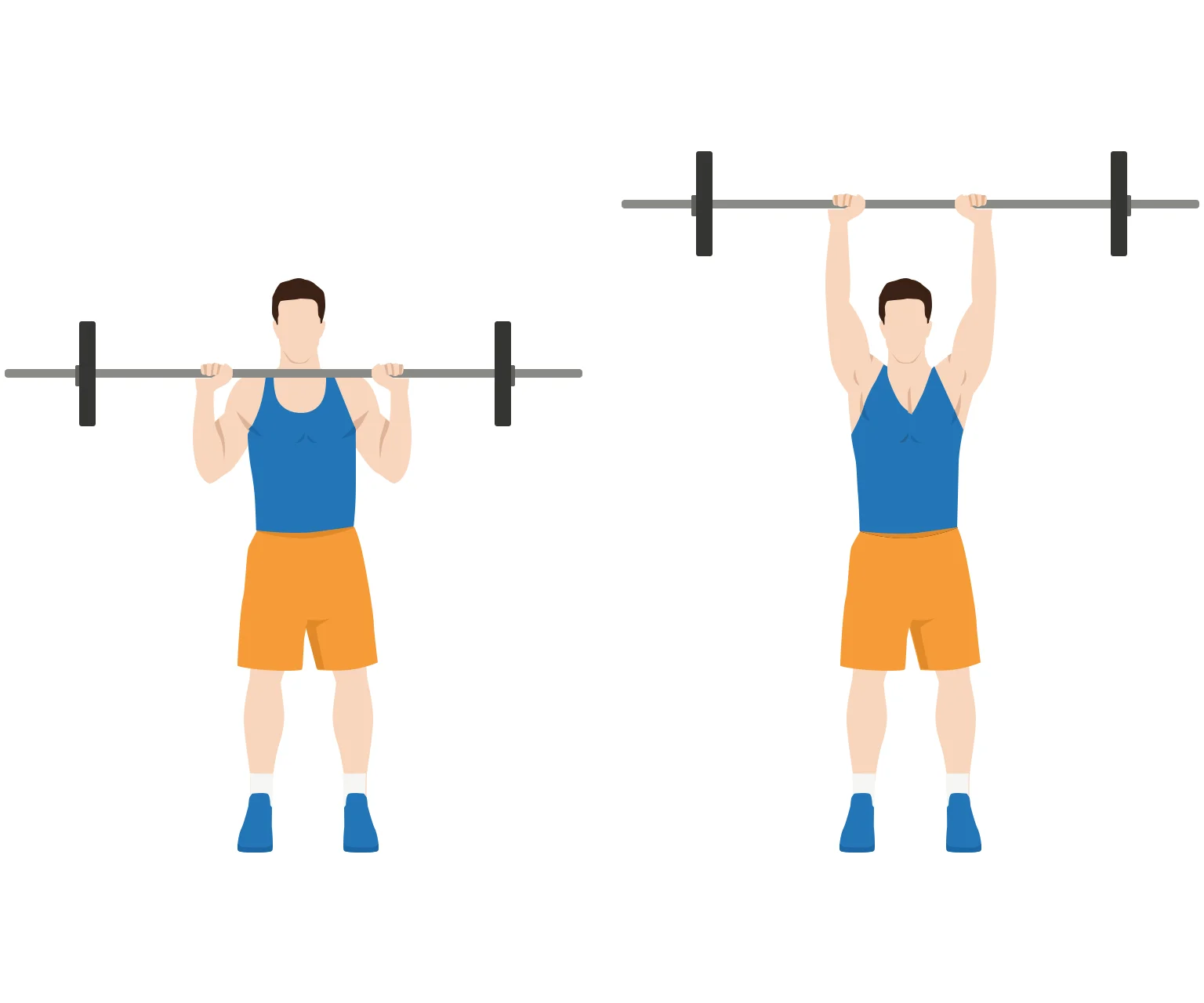
The barbell shoulder press targets your deltoids, the muscles making up most of your shoulders. It also works your triceps, upper chest muscles and traps. This makes it a go-to compound exercise for building upper body strength and size.
The shoulder press is a great exercise for both beginners and advanced trainees. You can easily adjust the weight to match your individual strength level.
Using a barbell rather than a pair of dumbbells allows you to lift a heavier weight. This can lead to greater muscle activation which in turn leads to enhanced growth and strength gains.
How to do
- Stand with your feet hip-width apart.
- Hold a barbell at shoulder height using an overhand grip (palms facing away from your body). Your hands should be slightly wider than shoulder-width apart.
- Bracing your core, press the barbell up until your arms are fully extended. Keep your back straight and avoid locking your elbows.
- Pause at the top of the movement for a second, then slowly lower the barbell back to the starting position.
- Repeat for the desired number of reps.
Sets and reps
For general fitness, 3-4 sets of 8-12 reps is a good place to start. This strikes the right balance between gaining strength, while also providing gains in muscular endurance and size growth.
If your goal is to improve strength, you might want to lift a heavier weight and reduce the reps to 6-8. Remember to start with a weight you can handle comfortably, such that you can perform the exercise with proper form and not reaching failure.
Dumbbell shoulder press
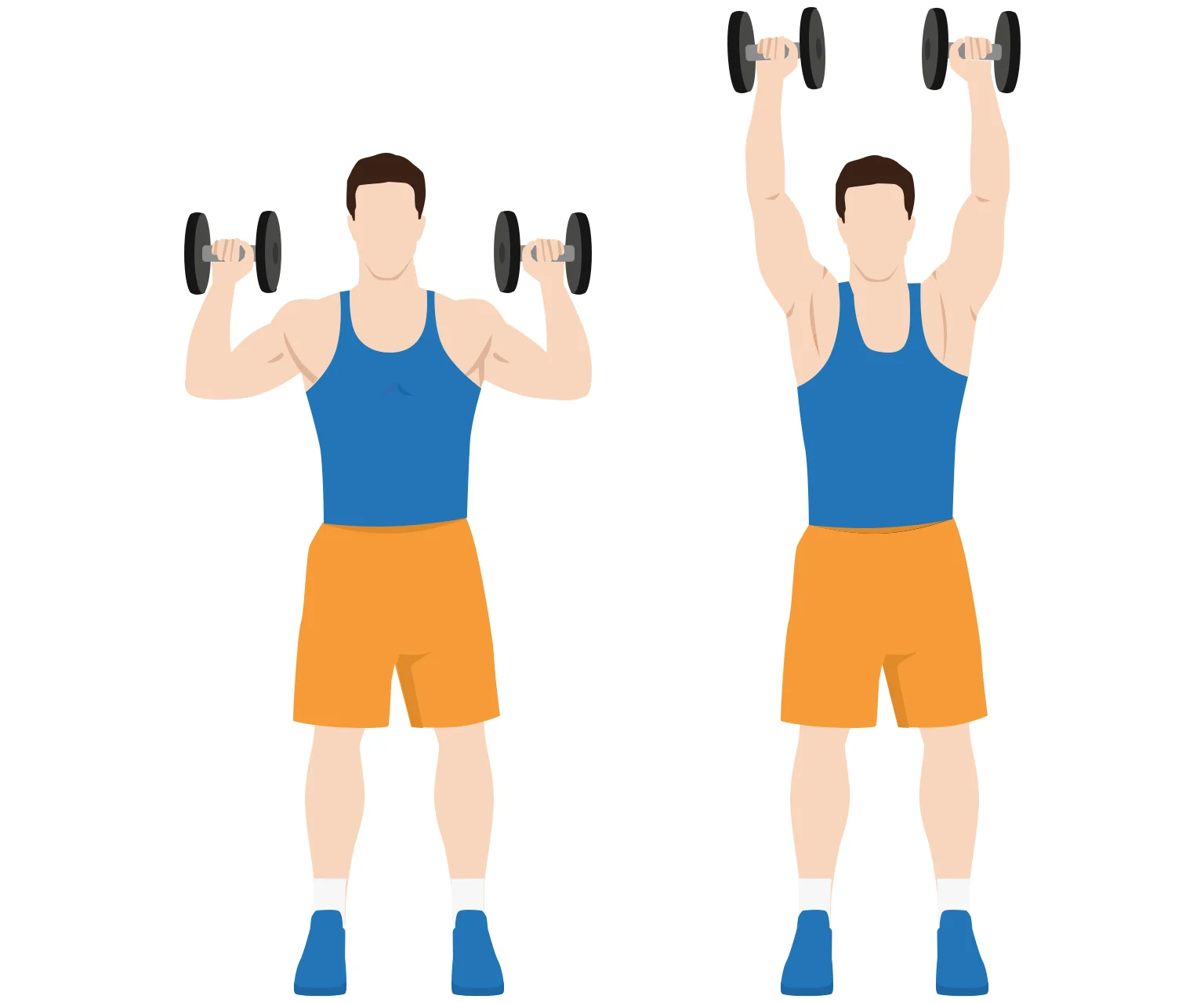
The dumbbell shoulder press allows for a greater range of motion compared with the barbell shoulder press. Because the weights are independently lifted, it also demands more from your stabilizer (shoulder and core) muscles.
Using dumbbells can also help you address muscular imbalances between your left and right arms.
How to do
- Stand with your feet hip-width apart.
- Hold a dumbbell in each hand and bring them up to your shoulder level. Your palms should be facing forwards, with your elbows bent at a 90 degree angle.
- Press the weights up until your arms are fully extended. Keep your back straight and avoid locking your elbows.
- Pause at the top of the movement for a second, then slowly lower the dumbbells back to the starting position.
- Repeat for the desired number of reps.
Seated shoulder press
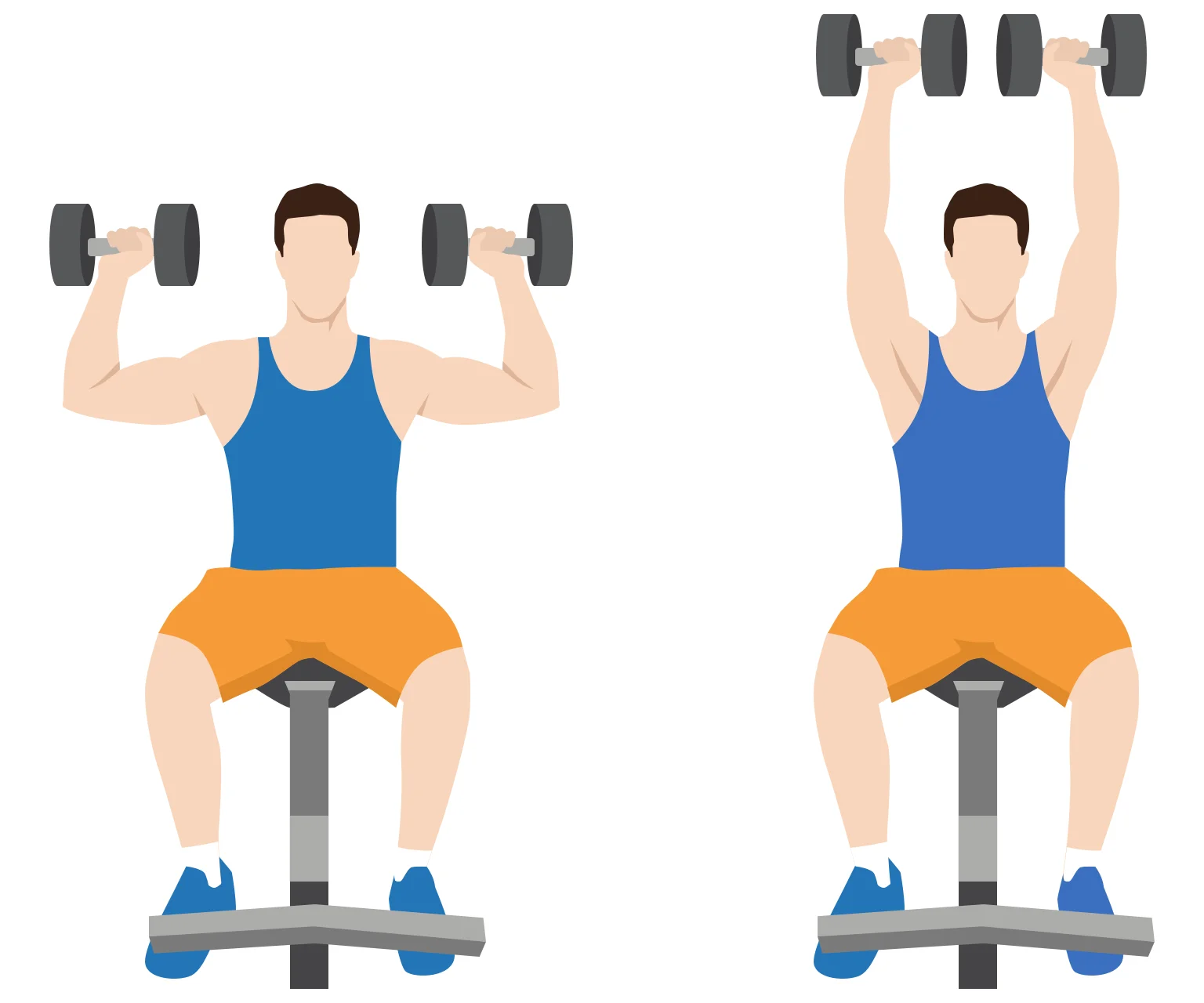
The seated variation of the shoulder press changes the exercise in terms of stability and core engagement. While seated, your lower body and core are not engaged, allowing you to focus more intensively on your shoulders and upper body.
This is a good variation if you want to focus on developing strength and definition in your upper body, or if you have poor balance.
How to do
- Sit on a bench with a back support. Plant your feet firmly on the floor.
- Hold a dumbbell in each hand and bring them up to your shoulder level. Your palms should be facing forwards, with your elbows bent at a 90 degree angle.
- Press the weights up until your arms are fully extended. Keep your back straight and avoid locking your elbows.
- Pause at the top of the movement for a second, then slowly lower the dumbbells back to the starting position.
- Repeat for the desired number of reps.
Arnold press
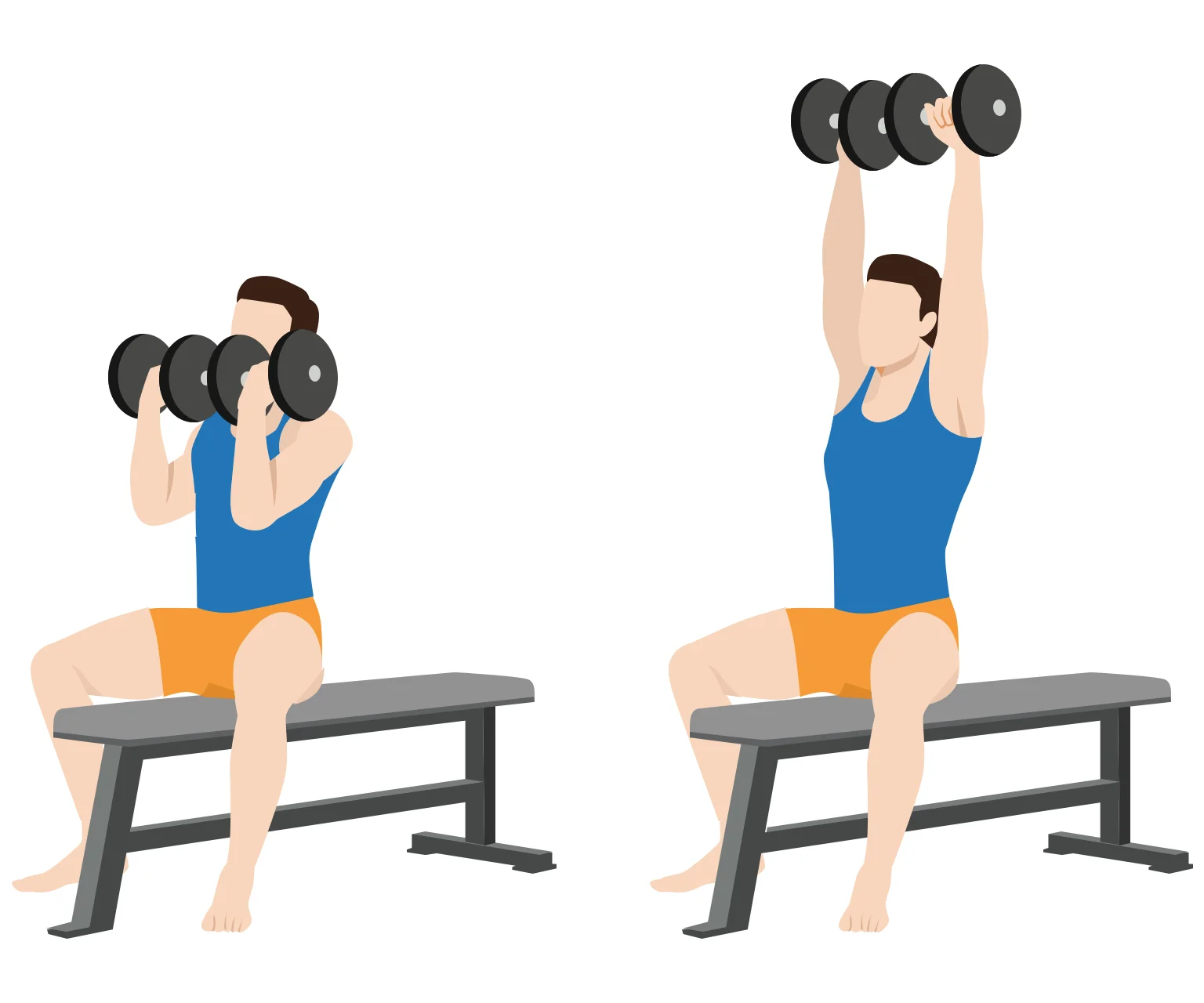
The Arnold press tweaks the dumbbell shoulder press by adding a rotation of your arms as you push the dumbbells up. This simple trick targets your deltoid muscles - including your rear delts - more comprehensively than the traditional shoulder press.
You should do this exercise if you want to develop your rear delts, or if you are looking to improve your shoulder mobility and stability.
How to do
- Sit on a bench with a back support. Plant your feet firmly on the floor.
- Hold a dumbbell in each hand and bring them up to your shoulder level. Your palms should be facing towards your body.
- Press the weights up until your arms are fully extended. As you push, rotate your wrists so that your palms face outwards at the top of the movement.
- Pause at the top of the movement for a second, then slowly lower and rotate the dumbbells back to the starting position.
- Repeat for the desired number of reps.
Dumbbell thrusters
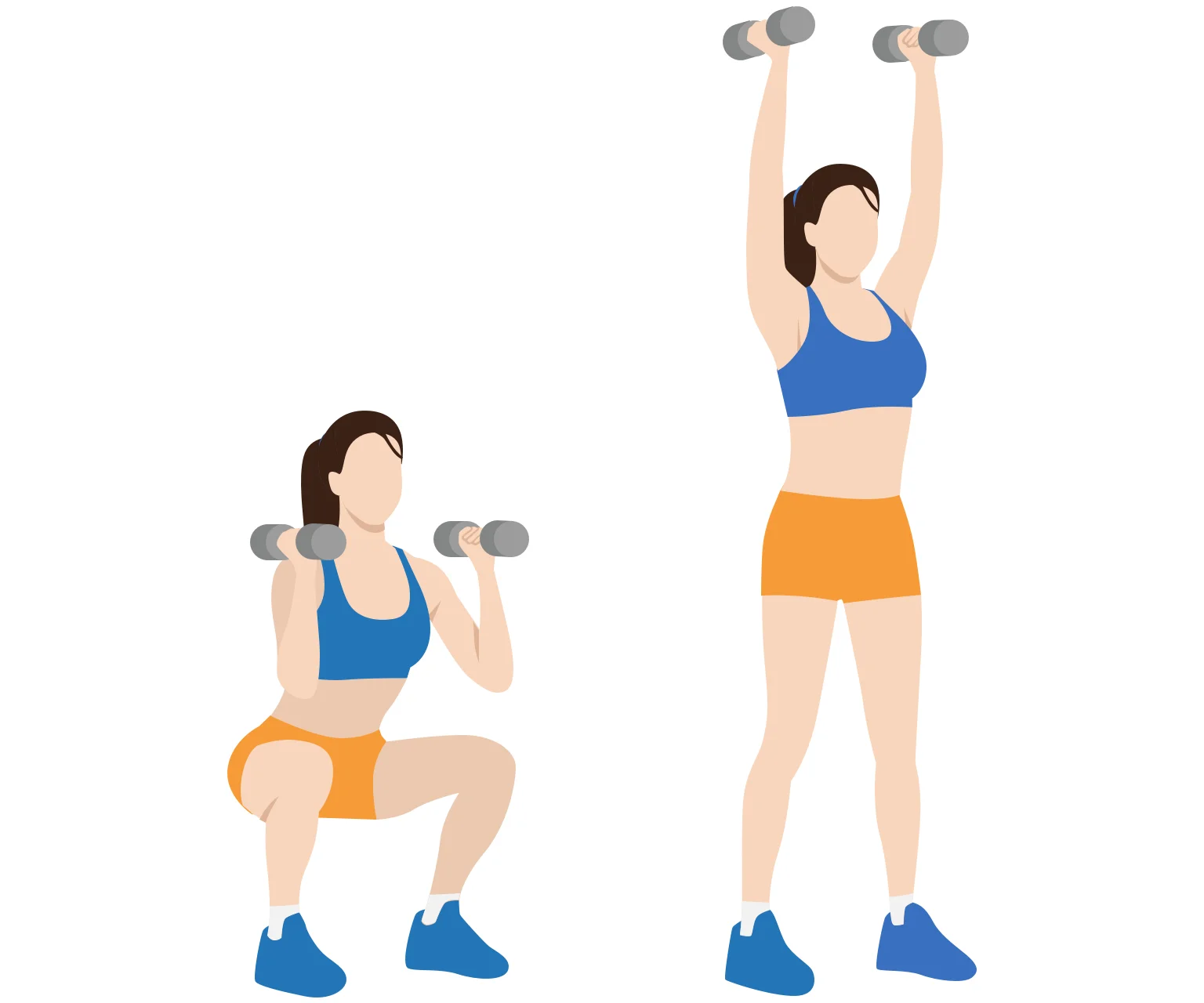
Dumbbell thrusters are a full body exercise that sees you perform a squat before transitioning into a shoulder press. While the shoulder press is more of an upper body isolation exercise, dumbbell thrusters work your quads, hamstrings and glutes, too, making it a full body compound exercise.
The dumbbell thruster exercise is high intensity and efficient exercise, and can help you improve your overall strength, power and cardio fitness! If you follow a full body workout routine, it can be a great exercise to include.
How to do
- Stand tall with your feet about hip-width apart.
- Hold a dumbbell in each hand at shoulder level.
- Lower into a squat, keeping your chest up and pushing your knees out (but not beyond your toes).
- As you stand up from the squat, use the momentum to press the dumbbells overhead until your arms are fully extended.
- Now, lower the dumbbells back to shoulder level while standing, then repeat the exercise by lowering into a squat.
- Repeat for the desired number of reps.
Tips
Modifications to make the shoulder press more challenging
In addition to the variations listed above, here are some simple modifications you can think about to make this exercise more challenging:
- Adjust the grip - In the barbell shoulder press, using a wide grip will target more of your lateral (side) deltoids, whereas a narrow grip will put more emphasis on your anterior (front) deltoids.
- Slow it down - Performing the exercise slowly will increase the time under tension, while will activate your muscles for longer and lead to greater muscle growth. It also means you are not using momentum to assist the lift, ensuring you engage only the targeted muscles.
- Pause at the top - In the shoulder press, add a pause for one or two seconds at the top of the movement. This will increase muscle activation and make the exercise more challenging.
Keep you back flat
In both standing and seated shoulder press, keep your back and spine straight. This will protect your spine and ensure the focus of the exercise is on your shoulders, rather than your back.
If you arch your back, you increase your risk of lower back injuries, particularly if you are lifting heavy weights.
Weight and progression
Your shoulders are a relative small muscle group, particularly when compared to your chest. Their smaller size makes them more prone to injury.
Ensure you start with a light weight so you can perfect the proper form. Once you are comfortable with the exercise you can gradually increase the weight to make the exercise more challenging.
Don't lock out your elbows
During the shoulder press, you want to keep a constant tension on your shoulder muscles. This tension increases activation of your deltoids and triceps, leading to muscle growth.
Locking out your elbow also puts your elbow joint at risk of strain or injury. You'll want to avoid these as they can be painful and slow to heal.
References
Durall, C. J., Manske, R. C., & Davies, G. J. (2001). Avoiding shoulder injury from resistance training. Strength & Conditioning Journal, 23(5), 10.
